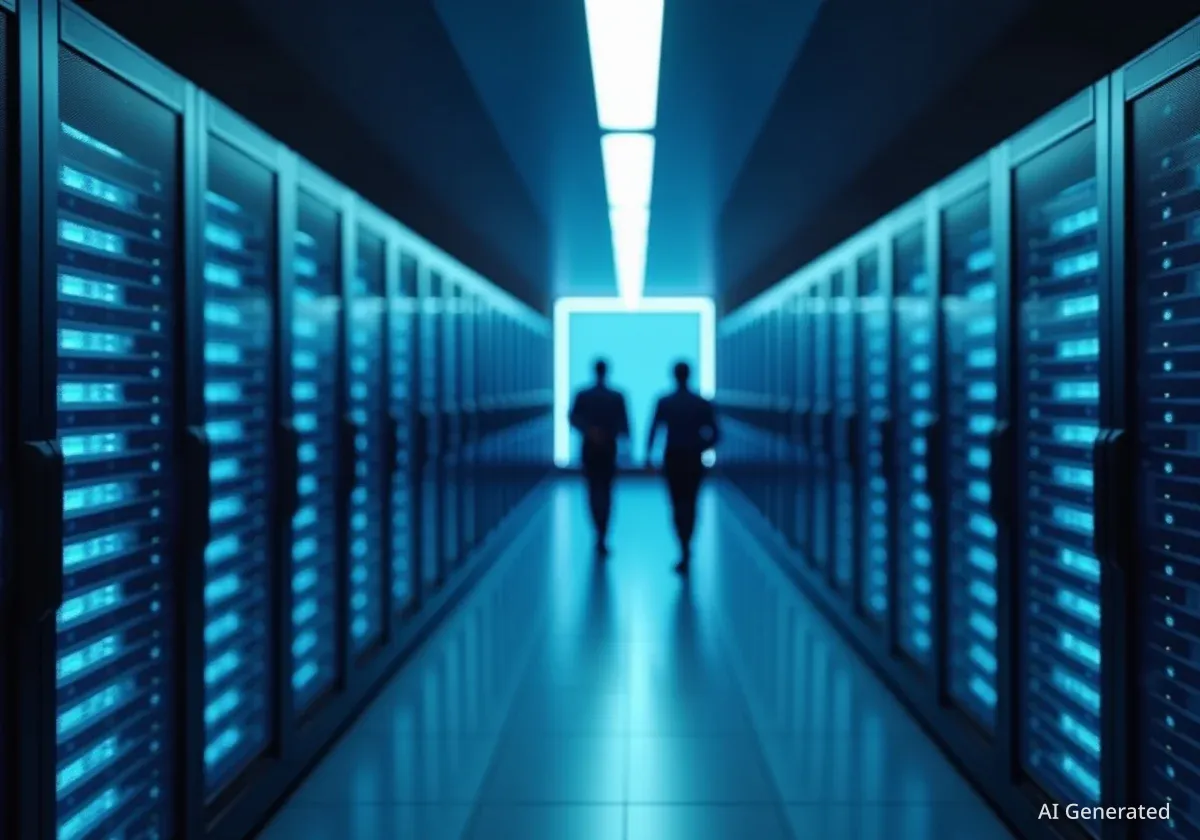InnovateCorp has announced a significant $2 billion investment to construct a new artificial intelligence research and development hub in Austin, Texas. The project is expected to create approximately 1,500 specialized jobs over the next three years, focusing on foundational AI models and applied robotics.
The company stated that the new facility will serve as its primary center for advanced AI research, aiming to accelerate breakthroughs in machine learning and automation technologies. Construction is scheduled to begin in the first quarter of 2025, with an expected completion date in late 2027.
Key Takeaways
- InnovateCorp will invest $2 billion to build a new AI research and development facility in Austin, Texas.
- The project is projected to create 1,500 new high-skilled jobs in fields like AI research, robotics, and software engineering.
- The hub will focus on developing foundational AI models and advancing applied robotics technology.
- Construction is set to start in early 2025 and is planned for completion by the end of 2027.
Project Scope and Investment Details
The $2 billion investment from InnovateCorp is allocated for multiple phases of the project. A significant portion will cover land acquisition and the construction of a state-of-the-art 500,000-square-foot campus. The facility is designed to support both theoretical research and practical application development.
Company officials confirmed that the funding also includes substantial investment in specialized computing infrastructure. This will feature next-generation servers and networking equipment necessary for training large-scale AI models. The remainder of the budget is designated for talent acquisition and operational costs for the first five years.
Strategic Focus of the New Hub
The Austin facility will have two primary areas of focus. The first is the development of next-generation foundational AI models, which are large, general-purpose systems that can be adapted for various tasks. This research aims to improve the efficiency and capabilities of current AI technology.
The second major focus will be on applied robotics. Researchers at the hub will work on integrating advanced AI into physical systems, with potential applications in logistics, manufacturing, and healthcare. The goal is to create robots that can perform complex tasks in dynamic environments.
By the Numbers: The Austin Hub
- Total Investment: $2 billion
- Facility Size: 500,000 square feet
- New Jobs Created: 1,500
- Construction Timeline: Q1 2025 - Q4 2027
- Primary Research Areas: Foundational AI, Applied Robotics
Economic Impact on Austin
The decision to build the hub in Austin is expected to have a notable economic impact on the region. The creation of 1,500 direct jobs, many of them high-paying technology positions, will contribute to the local economy. These roles will include AI research scientists, machine learning engineers, robotics specialists, and data analysts.
Local officials have welcomed the announcement. Austin Mayor, Jane Smith, commented on the development.
"InnovateCorp's investment is a testament to Austin's position as a leading technology center. This project will not only bring high-quality jobs but will also strengthen our ecosystem of innovation, attracting more talent and investment to our city."
In addition to direct employment, the project is expected to generate secondary economic benefits. The construction phase will create hundreds of temporary jobs, and the subsequent operation of the facility will support local businesses and services.
Austin's Growing Tech Scene
Austin has steadily grown into a major hub for the technology industry, often referred to as "Silicon Hills." The city is home to major offices for numerous large tech companies and boasts a vibrant startup culture. Its appeal is driven by a strong talent pool from local universities, a favorable business climate, and a high quality of life.
InnovateCorp's Broader AI Strategy
This investment is part of InnovateCorp's broader strategy to position itself as a leader in the artificial intelligence sector. The company has invested over $5 billion in AI-related initiatives in the past two years. The Austin hub represents the largest single investment in this strategy to date.
InnovateCorp CEO, David Chen, explained the company's long-term vision in a press release.
"Artificial intelligence is the most transformative technology of our time. This new research hub will be the epicenter of our efforts to responsibly develop AI that can solve some of the world's most complex challenges. We are committed to building the future, and we believe Austin is the right place to do it."
The company aims to centralize its most ambitious research projects at the new facility. By bringing top talent together in a purpose-built environment, InnovateCorp hopes to foster collaboration and accelerate the pace of discovery. The hub will also work closely with academic institutions, including the University of Texas at Austin, to create a pipeline for new research and talent.
Competition in the AI Landscape
InnovateCorp's move comes amid intense competition among major technology firms to dominate the AI space. Companies across the industry are investing billions of dollars in research, talent, and infrastructure. The development of more powerful and efficient AI models is seen as critical for future growth in nearly every sector of the economy.
This new facility positions InnovateCorp to better compete for top AI researchers and engineers. The scale of the investment signals the company's serious commitment to long-term research and development, rather than just focusing on near-term product applications. This approach is crucial for achieving fundamental breakthroughs in the field.





